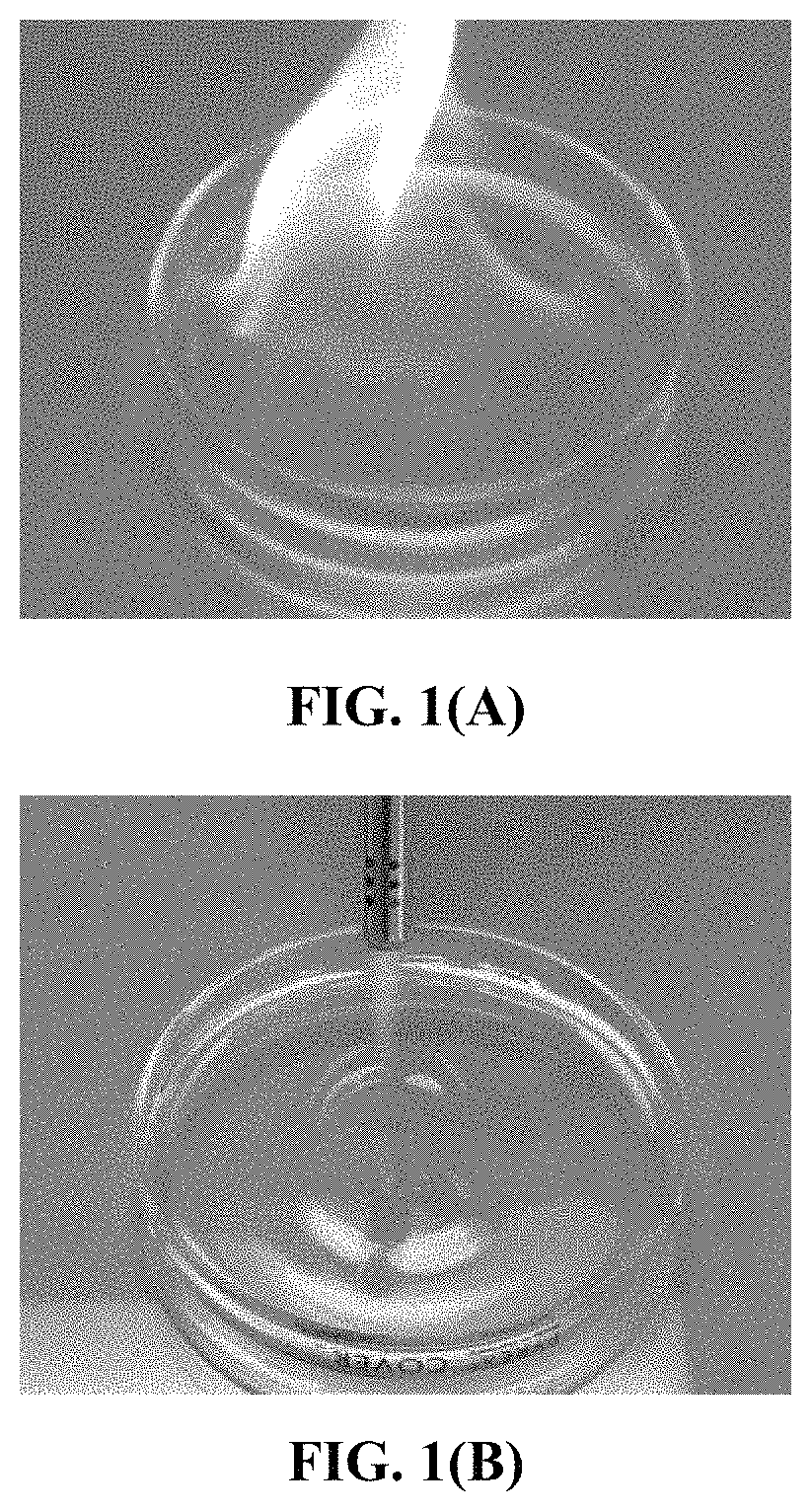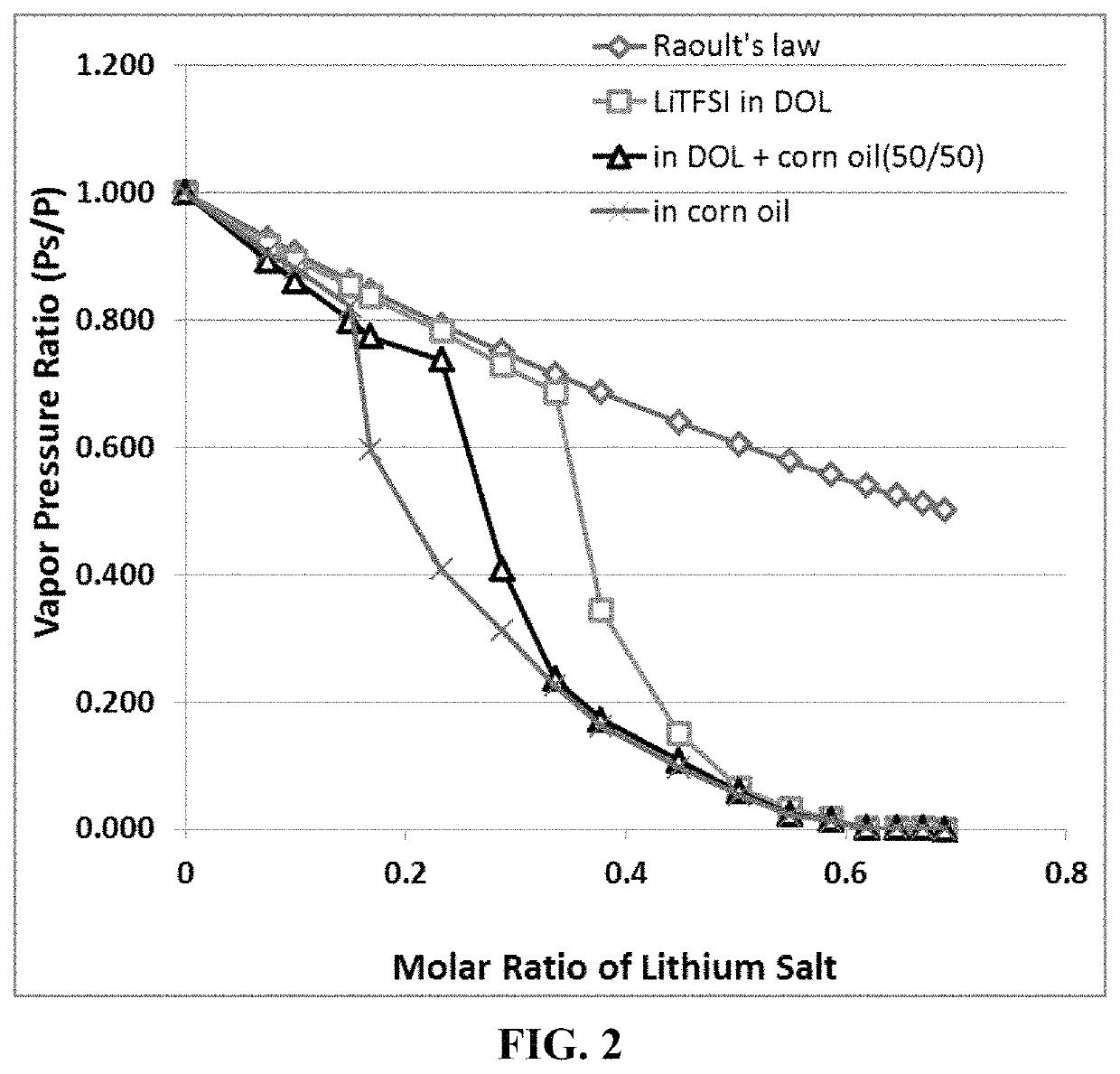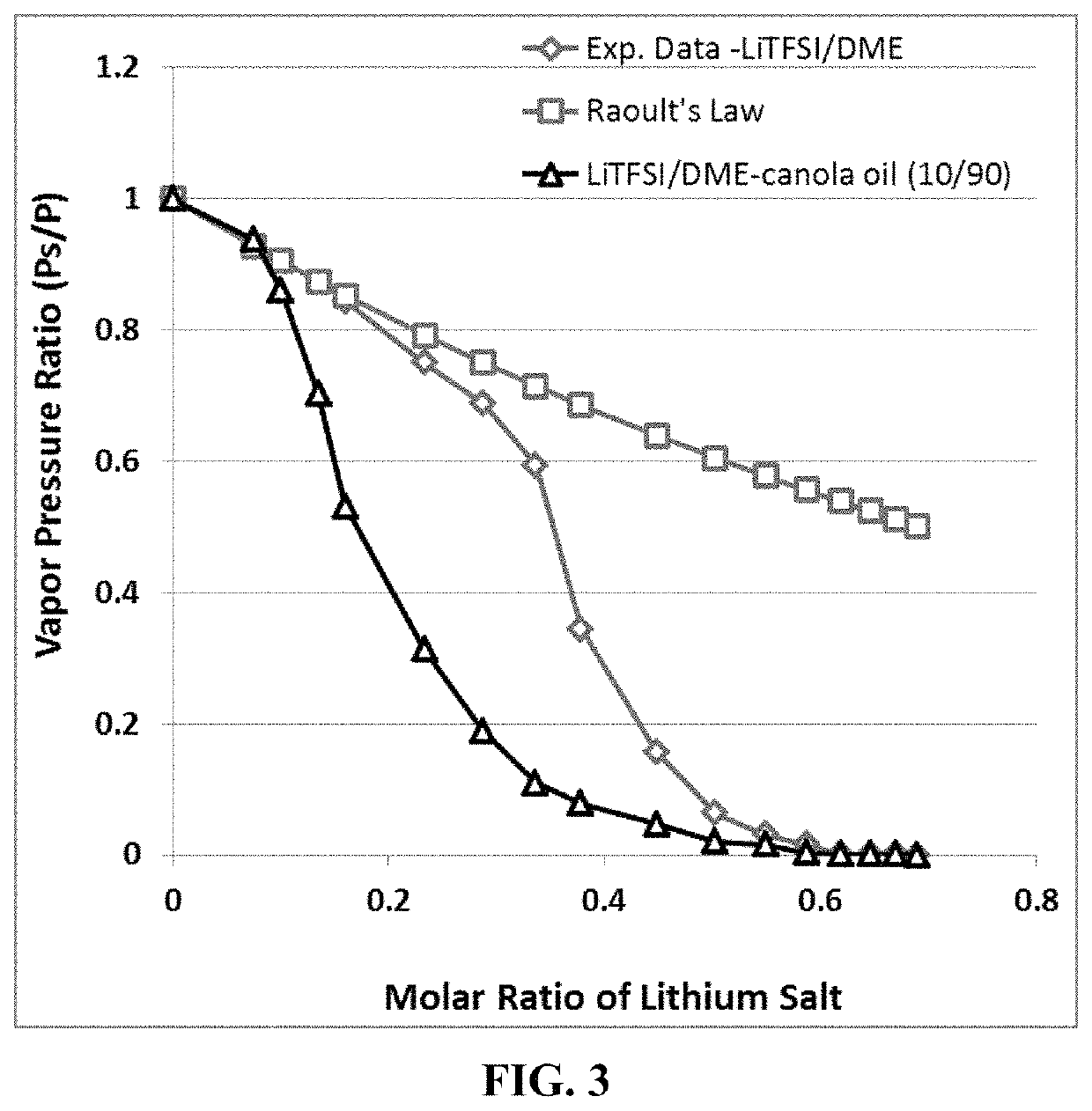Lithium secondary battery containing non-flammable electrolyte and manufacturing method
a non-flammable electrolyte and secondary battery technology, which is applied in the direction of cell components, sustainable manufacturing/processing, and final product manufacturing, to achieve the effect of reducing the tendency to self-igniting, adequate flowability, and effective suppression or elimination of flammability
- Summary
- Abstract
- Description
- Claims
- Application Information
AI Technical Summary
Benefits of technology
Problems solved by technology
Method used
Image
Examples
example 1
ples of Electrolytes Used
[0150]A wide range of lithium salts can be used as the lithium salt dissolved in an organic liquid solvent (alone or in a mixture with another organic liquid or an ionic liquid). The following are good choices for lithium salts that tend to be dissolved to some extents in selected cooking oil or mixtures of a cooking oil and an organic or ionic liquid solvents: lithium borofluoride (LiBF4), lithium trifluoro-metasulfonate (LiCF3SO3), lithium bis-trifluoromethyl sulfonylimide (LiN(CF3SO2)2 or LITFSI), lithium bis(oxalato)borate (LiBOB), lithium oxalyldifluoroborate (LiBF2C2O4), and lithium bisperfluoroethy-sulfonylimide (LiBETI). A good electrolyte additive for helping to stabilize Li metal is LiNO3. Particularly useful ionic liquid-based lithium salts include: lithium bis(trifluoro methanesulfonyl)imide (LiTFSI).
[0151]Preferred organic liquid co-solvents include: ethylene carbonate (EC), dimethyl carbonate (DMC), methylethyl carbonate (MEC), diethyl carbonat...
example 2
ssure of Some Solvents and Corresponding Electrolytes with Various Lithium Salt Molecular Ratios
[0152]Vapor pressures, measured at 100° C., of several solvents (different types of cooking oils and co-solvents, such as DOL, DME, PC, and AN) before and after adding a wide molecular ratio range of lithium salts, such as lithium borofluoride (LiBF4), LiPF6, lithium trifluoro-metasulfonate (LiCF3SO3), or bis(trifluoro methanesulfonyl)imide (LiTFSI). Some of the vapor pressure ratio data (ps / p=vapor pressure of solution / vapor pressure of solvent alone) are plotted as a function of the lithium salt molecular ratio x, as shown in FIG. 2-FIG. 5, along with a curve representing the Raoult's Law. In most of the cases, the vapor pressure ratio follows the theoretical prediction based on Raoult's Law for up to xs / p value, the vapor phase of the electrolyte cannot ignite even at 400-450° C. The cooking oil can shift the threshold concentration for non-flammability (defined as the onset point of a...
example 3
nts and Vapor Pressure of Some Solvents and Additives and Corresponding Quasi-Solid Electrolytes with a Lithium Salt Molecular Ratio of x=0.2
[0153]The flash points of several solvents (with or without a liquid additive) and their electrolytes having a lithium salt molecular ratio x=0.2 are presented in Table 1 below. It may be noted that, according to the OSHA (Occupational Safety & Health Administration) classification, any liquid with a flash point below 38.7° C. is flammable. However, in order to ensure safety, we have designed our quasi-solid electrolytes to exhibit a flash point significantly higher than 38.7° C. (by a large margin, e.g. at least increased by 50° and preferably above 150° C.). The data in Table 1 indicate that the addition of a lithium salt to a molecular ratio of 0.2 is normally sufficient to meet these criteria provided a selective additive is added into the liquid solvent.
[0154]
TABLE 1The flash points of select solvents and their electrolytes with alithium s...
PUM
| Property | Measurement | Unit |
|---|---|---|
| ion conductivity | aaaaa | aaaaa |
| flash point | aaaaa | aaaaa |
| flash point | aaaaa | aaaaa |
Abstract
Description
Claims
Application Information
 Login to View More
Login to View More - R&D
- Intellectual Property
- Life Sciences
- Materials
- Tech Scout
- Unparalleled Data Quality
- Higher Quality Content
- 60% Fewer Hallucinations
Browse by: Latest US Patents, China's latest patents, Technical Efficacy Thesaurus, Application Domain, Technology Topic, Popular Technical Reports.
© 2025 PatSnap. All rights reserved.Legal|Privacy policy|Modern Slavery Act Transparency Statement|Sitemap|About US| Contact US: help@patsnap.com



